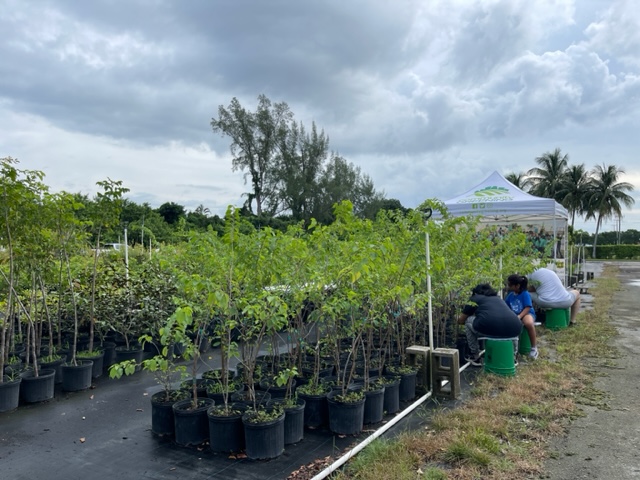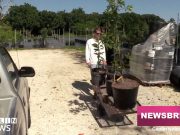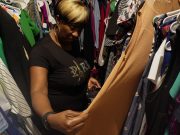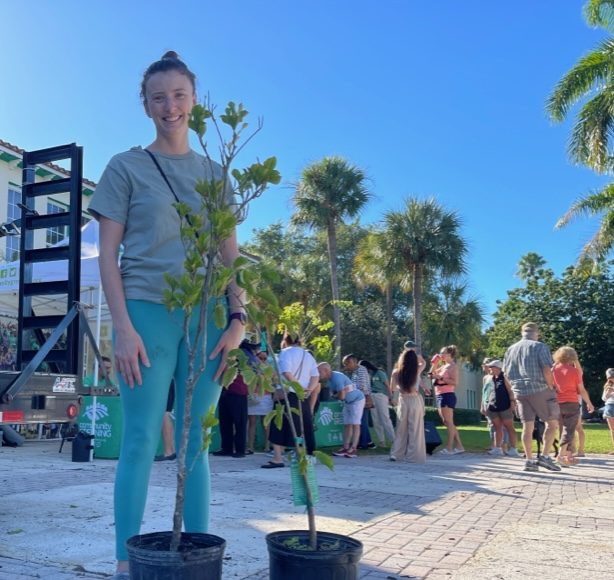Heather Seaman said she came with turtles on her mind.
The doctoral student from Florida Atlantic University studying integrated biology took home two free trees at a recent giveaway event held by Community Greening Nursery in Boca Raton.
“My focus is the sea turtles,” Seaman said. “Trees help them because they give the beaches shade.”
Volunteers with the non-profit urban forestry group gathered on a recent Saturday morning in Boca Raton to pot Blackbead saplings and help with weeding and watering the young trees. The effort at Community Greening was to prepare the saplings for future planting in urban areas of South Florida.
In just two hours, 165 trees were transplanted into larger pots and 70 pots were weeded.
The potting event is just a tiny part of the national and worldwide effort to save the environment and reduce climate change by planting trees.
“If no one did anything what would happen to the communities? It would fall apart,” said Cyrus Pakravan, a Palm Beach County resident as he tended to the seedlings alongside his son.
Trees provide numerous environmental benefits, according to advocates and experts.
They remove carbon dioxide emissions and release oxygen into the atmosphere while keeping the planet cool amid the rising global temperatures. The warm temps accelerate the frequency and intensity of rainfall due to the ocean water evaporating.
Steven Oberbauer, a professor of biological sciences at Florida International University, said that one of the big problems in Miami-Dade County is the rain runoff that picks up pollutants and flows into the oceans and canals.
“Trees reduce the amount of runoff a lot,” he said. “About 20% of the rain doesn’t hit the ground, it splatters in the leaves.”
“They (trees and plants also) take up pollution, nitrogen oxide chemicals are absorbed into the plants and neutralized,” Oberbauer added. “They actually capture dust and the dust is taken out of the atmosphere. Then when it rains it washes down the tree and ends up in the soil as opposed to being breathed in.”
The tree canopies are vital for their cooling properties but water is also evaporating off of them. “They cool the environment because they are transpiring, it’s not just the fact that they are making shade,” Oberbauer said.
Trees also work as windbreaks, aiding in the efforts to restore mangroves.
“Mangroves are not only important for blocking wind from storms but in slowing down the storm surge,” Oberbauer said.

Josh Weiner, the engagement and communications director for Community Greening, said 200 trees were given away at the Boca Raton event.
“People can just show up and we will give them free trees to plant at their house because there’s only so much public land out there, so we also need people to be planting on their private property,” Weiner said.
The organization also has taxpayer-funded tree-planting contracts with cities in South Florida. In Delray Beach, for example, 2,000 trees are planted each year.

Both native and non-native tree species are being introduced to add into the landscape.
Michele Laskowski, the Community Greening urban forestry director, explained the importance of having a mix when sprouting new seedlings to grow a variety of genes of the plant species. In agricultural settings, if one tree becomes diseased, others would be susceptible as well.
Since 2016, Community Greening has planted 14,482 trees with the help of over 7,000 volunteers.
“Climate change as a whole is something that everybody in the world is going to have to try and tackle,” Weiner said. “That’s why we (want) to get as many people as possible to get involved to create greener and more sustainable communities and neighborhoods.”

































